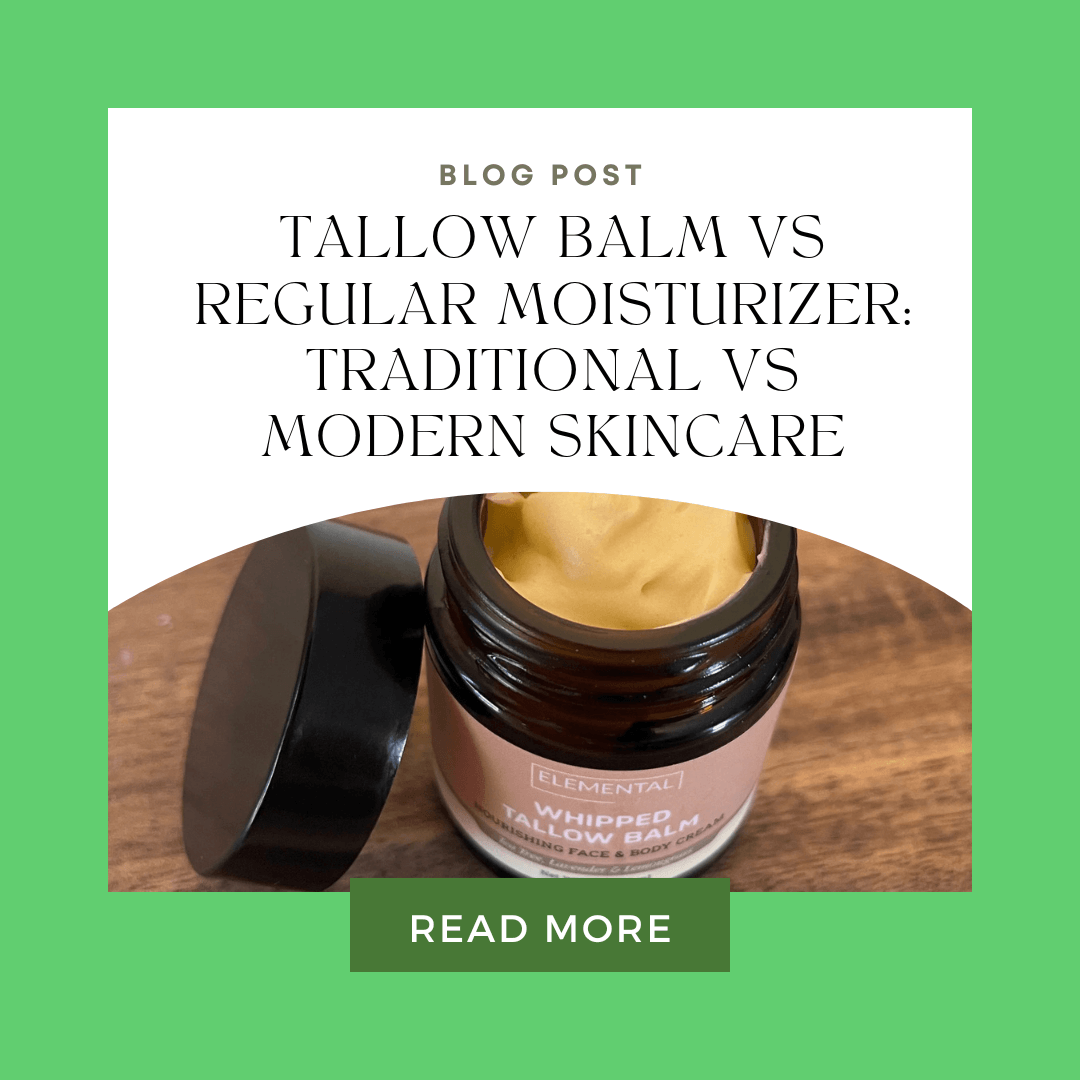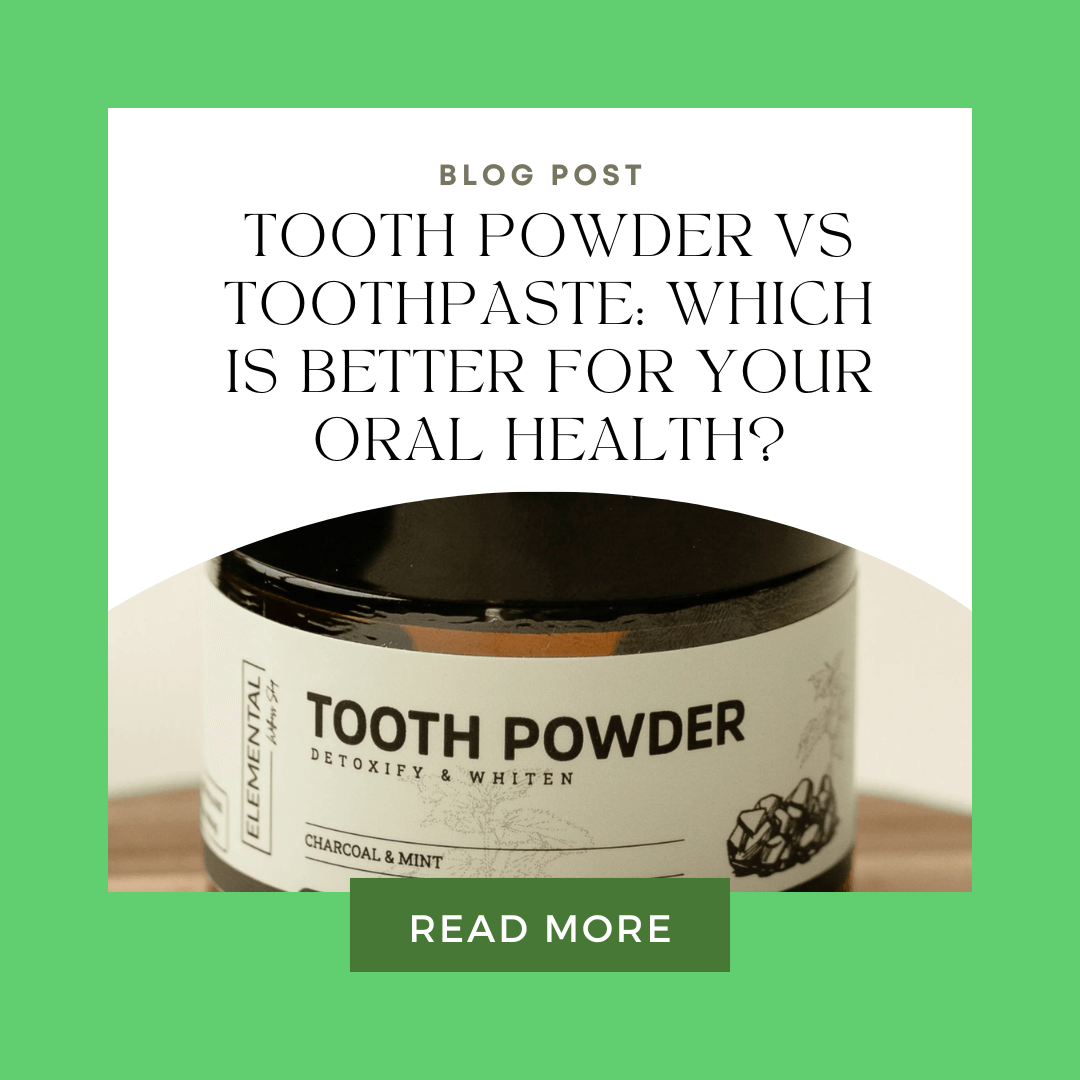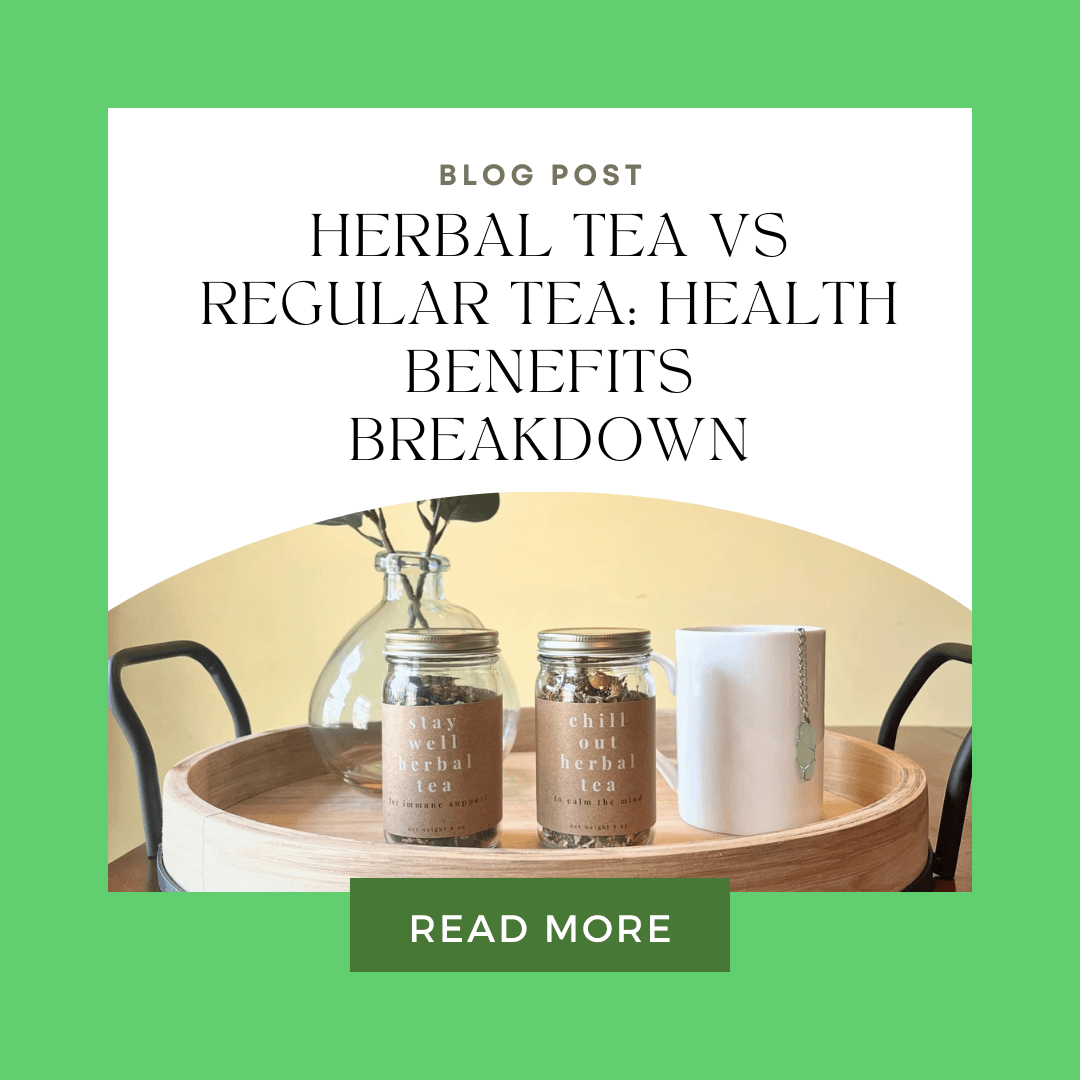Tooth Powder vs Toothpaste: Which is Better for Your Oral Health?
Ancient civilizations had stronger teeth than modern humans—here's why traditional tooth powder might be the key to optimal oral health.
Despite daily toothpaste use, 92% of adults develop cavities during their lifetime. This startling statistic raises important questions about our modern oral care approach. As someone passionate about natural wellness and traditional health practices, I've researched extensively how our ancestors maintained dental health without modern conveniences—and the results might surprise you.
Archaeological evidence shows that ancient civilizations often had superior dental health compared to modern populations, despite lacking fluoride toothpaste and modern dental care. The secret? Simple, natural tooth powders containing remineralizing ingredients that worked with the body's natural healing processes rather than against them.
This comprehensive comparison examines tooth powder versus toothpaste through both traditional wisdom and modern scientific understanding, helping you make an informed choice for your family's oral health.
The Fascinating History of Oral Care
Understanding how oral care evolved reveals why traditional methods might offer advantages over modern approaches.
Ancient Wisdom: 5,000 Years of Natural Oral Care
The earliest recorded tooth powder dates to 5000 BCE in Egypt, where people used a mixture of crushed salt, mint, dried iris flowers, and pepper. Ancient Greeks favored abrasives like pumice and ground bones, while Romans developed sophisticated formulations including crushed egg shells and oyster shells for their mineral content.
Traditional Chinese Medicine incorporated healing herbs like licorice root and ginseng into tooth powders, recognizing the connection between oral health and overall systemic wellness. Ayurvedic practices used neem, turmeric, and charcoal—ingredients modern science now validates for their antimicrobial and whitening properties.
Indigenous Wisdom: Native American cultures used willow bark (containing natural salicylates), sage for antimicrobial action, and various clays for gentle polishing and mineral supplementation.
The Industrial Revolution: How We Lost Our Way
The modern toothpaste era began in 1892 with Dr. Sheffield's Crème Dentifrice, the first toothpaste in a tube. Marketing campaigns convinced consumers that foaming action equaled cleaning power, leading to the widespread adoption of harsh detergents like sodium lauryl sulfate.
The introduction of fluoride in the 1950s marked another turning point, with public health officials promoting it as essential for cavity prevention. However, this approach focused on preventing disease rather than supporting the mouth's natural remineralization processes.
Modern Consequences: Today's commercial toothpastes often contain 15-20 synthetic ingredients, many of which disrupt oral microbiome balance and may interfere with the body's natural healing mechanisms.
The Natural Revival: Why Tooth Powder is Resurging
Growing awareness of ingredient safety, environmental concerns, and the limitations of conventional oral care have sparked renewed interest in traditional tooth powders. Modern formulations combine ancestral wisdom with contemporary understanding of oral health science.
What is Tooth Powder? Understanding the Traditional Approach
Tooth powder represents concentrated oral care in its purest form—dry, active ingredients without water, preservatives, or unnecessary additives.
Traditional Formulation Principles
Baking Soda Base: Most quality tooth powders use aluminum-free baking soda as their foundation. This naturally alkalizing ingredient helps neutralize acid-producing bacteria while providing gentle abrasive action.
Sea Salt Enhancement: Unrefined sea salt contributes essential minerals including calcium, magnesium, and trace elements that support tooth remineralization. Salt also provides natural antibacterial properties and helps reduce inflammation.
Clay Components: Bentonite and kaolin clays offer gentle polishing action while binding to toxins and heavy metals. These clays are rich in minerals that can be absorbed through the mouth's mucous membranes.
Herbal Additions: Traditional herbs like clove, cinnamon, or goldenseal provide antimicrobial and healing properties, supporting gum health and overall oral wellness.
Modern Scientific Improvements
Contemporary tooth powder formulations enhance traditional approaches with research-backed ingredients:
Nano-Hydroxyapatite: This biocompatible mineral makes up 97% of tooth enamel. When added to tooth powder, it can actually remineralize early cavities and strengthen enamel structure.
Xylitol Integration: This natural sugar alcohol prevents harmful bacteria from adhering to teeth while promoting beneficial oral bacteria growth.
Essential Oil Blends: Carefully selected essential oils like tea tree, peppermint, and cinnamon provide antimicrobial benefits while freshening breath naturally.
Trace Mineral Complexes: Modern tooth powders may include concentrated mineral blends that support the remineralization process more effectively than historical formulations.
Our Approach at Elemental Wellness
Our Herbal Remineralizing Tooth Powder combines traditional wisdom with modern innovation. We use organic baking soda, unrefined sea salt, therapeutic clays, and carefully selected herbs to create a gentle yet effective formula that supports your mouth's natural healing processes.
Why Our Formula Works: We avoid harsh abrasives and synthetic ingredients, instead focusing on alkalizing and mineralizing compounds that work with your body's natural remineralization process.
Understanding Modern Toothpaste: The Industrial Approach
Conventional toothpaste represents an industrial approach to oral care, prioritizing shelf stability, marketing appeal, and manufacturing efficiency over optimal health outcomes.
Basic Composition Breakdown
Modern toothpaste typically contains:
20-40% Abrasives: Silica, calcium carbonate, or aluminum oxide provide cleaning action but may be too harsh for daily use.
20-40% Water: Dilutes active ingredients and requires preservatives for shelf stability.
20-30% Humectants: Glycerin and sorbitol prevent drying but may interfere with remineralization processes.
1-2% Fluoride: The active ingredient promoted for cavity prevention, though concerns exist about systemic exposure.
5-10% Various Additives: Thickeners, flavors, colors, and preservatives complete the formulation.
Common Industrial Ingredients and Their Concerns
Sodium Lauryl Sulfate (SLS): Creates foaming action but can irritate oral tissues, cause canker sores in sensitive individuals, and strip away protective oral mucins.
Triclosan: An antibacterial agent that may contribute to antibiotic resistance and has been linked to hormone disruption. The FDA banned triclosan in hand soaps but still allows it in toothpaste.
Artificial Sweeteners: Saccharin and other synthetic sweeteners may alter oral microbiome balance, though long-term effects remain unclear.
Parabens: Preservatives that may have estrogenic effects and can accumulate in body tissues over time.
Microplastics: Some toothpastes contain plastic microbeads that can become lodged in gums and may persist in the environment.
The Fluoride Controversy
Fluoride represents one of the most debated ingredients in oral care:
Potential Benefits: Research shows fluoride can help prevent cavities by promoting remineralization and making teeth more resistant to acid attacks.
Growing Concerns: Studies suggest potential links to thyroid dysfunction, neurotoxicity (particularly in developing children), and dental fluorosis when exposure levels are high.
The Dosage Problem: Children often swallow significant amounts of toothpaste, potentially exceeding safe fluoride intake levels. The warning label on fluoride toothpaste advises contacting poison control if more than a pea-sized amount is swallowed.
Individual Sensitivity: Some people experience allergic reactions or sensitivity to fluoride, manifesting as oral irritation or systemic symptoms.
Scientific Comparison: Effectiveness Studies
Recent research provides valuable insights into the relative effectiveness of tooth powder versus toothpaste.
Plaque Removal: The Surprising Winner
A landmark 2017 study published in the Journal of Conservative Dentistry compared tooth powder to conventional toothpaste for plaque removal effectiveness. The results were striking:
67% Greater Effectiveness: Participants using tooth powder showed significantly better plaque reduction compared to those using conventional toothpaste.
Why Powder Performs Better:
- Higher concentration of active ingredients (no water dilution)
- Mechanical scrubbing action from fine particles
- Alkalizing effect neutralizes acid-producing bacteria
- Direct contact with teeth without dilution barriers
Study Limitations: Most research focuses on short-term plaque removal rather than long-term oral health outcomes, and many studies are funded by manufacturers.
Teeth Whitening: Natural vs Chemical Approaches
Tooth Powder Advantages:
- Natural abrasives like baking soda and clay gently remove surface stains
- Alkalizing action neutralizes acid stains from coffee, wine, and foods
- Clay minerals pull toxins and stains from enamel pores
- Essential oils provide fresh breath without artificial additives
Toothpaste Advantages:
- Chemical whitening agents like hydrogen peroxide provide dramatic results
- Peroxide-based formulas can penetrate deeper stains
- Immediate visible results appeal to consumer expectations
- Consistent whitening action with each use
Long-term Considerations: Natural whitening through tooth powder typically produces more sustainable results without enamel damage, while chemical whitening may weaken teeth over time.
Cavity Prevention: Beyond Fluoride
Traditional Fluoride Approach: Fluoride toothpaste works by promoting remineralization and making teeth more resistant to acid attacks from bacteria.
Natural Remineralization Alternatives:
- Nano-Hydroxyapatite: Studies show this biomimetic mineral can be as effective as fluoride for remineralization
- Xylitol: Prevents harmful bacteria adhesion while promoting beneficial bacteria
- Calcium and Phosphate: Essential minerals for natural tooth repair
- Alkalizing Ingredients: Create an environment hostile to cavity-causing bacteria
The pH Factor: Tooth powders typically create an alkaline environment in the mouth, which supports remineralization and inhibits harmful bacteria growth. Most toothpastes maintain a more neutral pH.
Ingredient Safety Deep-Dive: What Goes in Your Mouth Matters
Daily exposure to oral care ingredients means safety considerations are paramount, especially for children and sensitive individuals.
Concerning Toothpaste Ingredients
Sodium Lauryl Sulfate (SLS) Research:
- Linked to increased canker sore frequency in susceptible individuals
- May disrupt protective oral mucins, leaving mouth vulnerable to irritation
- Can increase tissue penetration of other chemicals
- Strips away beneficial oral bacteria along with harmful ones
Fluoride Safety Considerations:
- Thyroid Disruption: Fluoride can interfere with iodine uptake in the thyroid gland
- Neurotoxicity Concerns: Studies suggest potential developmental neurotoxicity in children
- Accumulation Issues: Fluoride accumulates in bones and may contribute to skeletal fluorosis
- Dental Fluorosis: Overexposure during tooth development causes permanent discoloration
Triclosan and Antibiotic Resistance:
- May contribute to the development of antibiotic-resistant bacteria
- Potential hormone disruption through estrogen mimicking
- Environmental persistence and bioaccumulation concerns
- FDA removed from hand soaps but still allows in toothpaste
Natural Tooth Powder Benefits
Baking Soda Safety and Effectiveness:
- GRAS Status: Generally Recognized as Safe by the FDA
- Natural Alkalizing: Helps maintain optimal oral pH
- Gentle Abrasion: Less abrasive than many commercial toothpaste ingredients
- Antimicrobial Properties: Naturally inhibits bacterial growth
Bentonite Clay Advantages:
- Toxin Binding: Binds to heavy metals and toxins for removal
- Mineral Rich: Provides calcium, magnesium, and trace minerals
- Gentle Polishing: Removes stains without scratching enamel
- Oral Detoxification: Supports natural detoxification processes
Sea Salt Benefits:
- Mineral Supplementation: Provides essential minerals for tooth health
- Natural Antibacterial: Inhibits harmful bacteria growth
- Inflammation Reduction: Helps reduce gum inflammation
- pH Balancing: Supports optimal oral pH levels
Essential Oil Advantages:
- Antimicrobial Effects: Natural compounds fight harmful bacteria
- Fresh Breath: Provides long-lasting freshness without synthetic chemicals
- Therapeutic Benefits: Many essential oils support gum health and healing
- No Synthetic Additives: Avoids artificial flavors and preservatives
Specific Oral Health Conditions: Choosing the Right Approach
Different oral health challenges may benefit from different approaches, making it important to understand which option serves your specific needs.
Sensitive Teeth: Gentle Remineralization
Tooth Powder Approach: Gentle clay-based formulas with remineralizing minerals can help build enamel strength over time, addressing the root cause of sensitivity.
Best Ingredients for Sensitivity:
- Nano-hydroxyapatite for enamel repair
- Gentle clays for cleaning without abrasion
- Alkalizing minerals to reduce acid erosion
- Soothing herbs like chamomile for inflammation
Toothpaste Approach: Potassium nitrate in specialized toothpastes provides immediate nerve protection by blocking pain signals.
Our Recommendation: For long-term sensitivity relief, natural remineralization through quality tooth powder often provides more sustainable results than chemical nerve blocking.
Gum Disease: Supporting Natural Healing
Tooth Powder Advantages:
- Anti-inflammatory herbs like myrrh and goldenseal support gum healing
- Alkalizing action creates an environment hostile to harmful bacteria
- Mineral content supports tissue repair and regeneration
- No harsh detergents that can irritate already inflamed gums
Traditional Herbal Support: Our formulation includes herbs traditionally used for gum health, supporting the body's natural healing processes.
Toothpaste Limitations: While antibacterial agents in toothpaste can reduce harmful bacteria, they may also disrupt beneficial oral microbiome bacteria essential for oral health.
Holistic Approach: Gum disease often reflects systemic health issues. Tooth powder supports oral health while encouraging attention to overall wellness factors.
Cavity-Prone Teeth: Remineralization vs Prevention
Traditional Fluoride Approach: Fluoride toothpaste aims to prevent cavities by making teeth more resistant to acid attacks and promoting remineralization.
Natural Remineralization Strategy:
- Supply minerals essential for tooth repair (calcium, phosphate, magnesium)
- Create alkaline environment that supports natural remineralization
- Support beneficial oral bacteria that protect against harmful species
- Address root causes rather than just preventing symptoms
Dietary Considerations: Both approaches work better when combined with reduced sugar intake and increased mineral-rich foods.
Our Philosophy: Supporting the body's natural remineralization processes often provides more sustainable oral health than relying solely on external protection.
Children's Oral Care: Safety First
Fluoride Concerns for Children:
- Higher risk of fluorosis during tooth development
- Greater likelihood of swallowing toothpaste
- Developing systems more vulnerable to chemical exposure
- Need for products that are safe if swallowed
Natural Advantages for Kids:
- Safe if swallowed in normal amounts
- Simple, recognizable ingredients parents can understand
- No artificial colors or flavors that may cause sensitivities
- Teaches healthy habits around natural wellness
Teaching Opportunities: Using natural tooth powder creates conversations about healthy choices and traditional wisdom.
Cost and Convenience Analysis
Understanding the true cost and convenience factors helps inform your oral care decisions.
Initial Investment vs Long-term Value
Upfront Costs: Quality tooth powder typically costs $15-25 for a 2-3 ounce container, compared to $3-8 for conventional toothpaste.
Usage Analysis:
- Tooth powder: Very small amounts (1/4 teaspoon) provide effective cleaning
- Container typically lasts 3-4 months with daily use
- Cost per use: approximately $0.10-0.15
Toothpaste Comparison:
- Average tube costs $4-6 and lasts 1-2 months
- Cost per use: approximately $0.15-0.25
- Need for separate products (whitening, sensitivity) increases cost
Multi-Purpose Value: Quality tooth powder often eliminates need for separate whitening products, sensitivity treatments, or mouth rinses.
Travel and Storage Considerations
Tooth Powder Advantages:
- TSA-friendly (no liquid restrictions)
- Compact size saves luggage space
- No risk of spills or leaks
- Long shelf life without refrigeration
- Concentrated formula means small amounts travel far
Storage Requirements:
- Keep dry to prevent clumping
- Airtight containers preserve freshness
- Cool, dry storage extends shelf life
- No refrigeration needed
Convenience Factors:
- Learning curve for proper application
- May require small spoon or dispenser
- Some people prefer familiar squeeze tubes
- Children may need instruction on proper amount
Environmental Impact
Packaging Considerations:
- Glass jars are recyclable and reusable
- Minimal packaging compared to toothpaste tubes
- No plastic tube waste
- Concentrated formula reduces shipping impact
Ingredient Sourcing:
- Natural ingredients often have lower environmental impact
- Local sourcing possible for many ingredients
- Biodegradable formulations don't pollute water systems
- No synthetic manufacturing processes for many components
Long-term Environmental Benefits: Switching to tooth powder typically reduces bathroom waste by 75% or more compared to conventional toothpaste tubes.
How to Use Tooth Powder Effectively: Mastering the Technique
Proper technique ensures optimal results and prevents common mistakes that might lead to dissatisfaction with tooth powder.
Step-by-Step Application Method
Preparation:
- Wet your toothbrush with clean water
- Shake excess water (damp, not dripping)
- Measure approximately 1/4 teaspoon of powder (less is more)
- Either dip brush into powder or sprinkle powder onto brush
Brushing Technique:
- Begin with gentle circular motions on one section of teeth
- Allow powder to mix with saliva to form mild paste
- Brush for 2 minutes, focusing on gumline and tooth surfaces
- Apply gentle pressure—let the ingredients do the work
- Rinse thoroughly with clean water
Post-Brushing Care:
- Rinse mouth completely to remove all residue
- Clean toothbrush thoroughly
- Store powder in dry location
- Consider oil pulling or herbal mouth rinse for additional benefits
Common Mistakes and How to Avoid Them
Using Too Much Product:
- Problem: Causes gritty sensation and waste
- Solution: Start with very small amounts, gradually adjust
- Tip: Remember that a little concentrated powder goes far
Brushing Too Aggressively:
- Problem: Can cause gum irritation or enamel wear
- Solution: Use gentle pressure, let ingredients provide cleaning action
- Technique: Think massage rather than scrubbing
Inadequate Rinsing:
- Problem: Powder residue can feel gritty
- Solution: Rinse thoroughly with clean water multiple times
- Enhancement: Follow with herbal mouth rinse if desired
Expecting Immediate Dramatic Results:
- Problem: Disappointment when results differ from conventional toothpaste
- Reality: Natural approaches often take time to show full benefits
- Patience: Allow 2-4 weeks for full adjustment and results
Transition Tips for Success
Gradual Introduction:
- Start using tooth powder every other day
- Alternate with familiar toothpaste during adjustment period
- Gradually increase frequency as mouth adjusts
- Full transition typically takes 2-4 weeks
Technique Refinement:
- Experiment with different amounts to find your optimal quantity
- Try different application methods (dip vs sprinkle)
- Adjust water amount on brush for preferred consistency
- Notice how your mouth feels and responds
Family Considerations:
- Introduce to children gradually and with supervision
- Make it fun by explaining traditional uses and benefits
- Consider starting with milder formulations for sensitive family members
- Create positive associations with natural health choices
DIY vs Commercial Tooth Powder: Making the Best Choice
Understanding the pros and cons of homemade versus professionally formulated tooth powder helps you make the best choice for your family.
DIY Tooth Powder Benefits
Complete Ingredient Control: You know exactly what goes into your formulation and can avoid any personal sensitivities or allergies.
Cost Savings: Basic ingredients like baking soda, sea salt, and clay are inexpensive when purchased in bulk.
Customization: Adjust ingredients based on specific oral health needs, preferences, or sensitivities.
Educational Value: Making your own creates deeper understanding of natural oral care principles.
Fresh Batches: Small homemade batches ensure maximum freshness and potency.
DIY Risks and Limitations
Formulation Challenges: Achieving proper ratios requires understanding of ingredient interactions and safe concentrations.
Safety Concerns: Some herbs can be harmful if used incorrectly or in excessive amounts.
Contamination Risk: Home preparation may introduce bacteria or other contaminants without proper sanitation.
Inconsistent Results: Variations in ingredients or measurements can create unpredictable effectiveness.
Time Investment: Sourcing ingredients, preparation, and storage require ongoing commitment.
Commercial Advantages
Professional Formulation: Experienced formulators understand ingredient synergies and safe concentration levels.
Quality Testing: Reputable manufacturers test for purity, potency, and safety standards.
Consistent Results: Standardized manufacturing processes ensure consistent product quality.
Convenience: Ready-to-use products save time and eliminate preparation requirements.
Research-Backed Formulations: Professional products may incorporate latest research and ingredient innovations.
What to Look For in Commercial Products
Ingredient Transparency: Complete ingredient lists with clear identification of all components.
Organic Certification: Third-party organic certification ensures ingredient purity and sourcing standards.
Company Reputation: Established companies with track records in natural health formulation.
Testing Standards: Products tested for heavy metals, microbes, and other contaminants.
Sustainable Practices: Companies committed to environmental responsibility and ethical sourcing.
Educational Resources: Companies that provide education about natural oral care and ingredient benefits.
Our Commitment at Elemental Wellness
Our Herbal Remineralizing Tooth Powder represents years of formulation refinement, combining traditional wisdom with modern safety standards.
Why Choose Our Formulation:
- Organic ingredients sourced from trusted suppliers
- Proper ratios developed through extensive testing
- Made in small batches for maximum freshness
- Third-party tested for purity and safety
- Traditional herbs combined with modern remineralizing minerals
Quality Assurance: Every batch is tested for purity, and we maintain detailed records of ingredient sources and manufacturing processes.
Addressing Common Concerns and Myths
Many people have preconceptions about tooth powder based on outdated information or poor-quality products. Let's address these concerns with facts.
"Tooth Powder Tastes Bad"
The Reality: Modern tooth powder formulations use carefully selected herbs and essential oils to create pleasant, refreshing flavors.
Quality Matters: Poor-quality powders may taste chalky or bitter, while well-formulated products provide enjoyable taste experiences.
Adaptation Period: Your palate may need time to adjust from artificial flavors to natural tastes.
Our Approach: We use organic peppermint and other herbs to create a fresh, clean taste that most people find preferable to artificial toothpaste flavors.
"It's Messy and Inconvenient"
Learning Curve: Like any new habit, using tooth powder requires initial technique development.
Proper Tools: Using appropriate dispensers and techniques minimizes mess.
Travel Reality: Many users find powder more convenient for travel than liquid toothpaste.
Habit Formation: After 2-3 weeks, most people find tooth powder as convenient as toothpaste.
"Baking Soda is Too Abrasive"
Scientific Evidence: Baking soda rates 7 on the RDA (Relative Dentin Abrasivity) scale, while many commercial toothpastes rate 50-200.
Natural vs Synthetic: Natural abrasives like baking soda are generally gentler than synthetic alternatives.
Proper Use: Gentle brushing technique with quality powder is less abrasive than aggressive brushing with conventional toothpaste.
"You Need Fluoride for Cavity Prevention"
Alternative Approaches: Remineralizing minerals like nano-hydroxyapatite show comparable effectiveness to fluoride in many studies.
Systemic Health: Natural approaches support overall oral health rather than just preventing specific diseases.
Individual Variation: Some people achieve better oral health with natural approaches, while others may benefit from fluoride supplementation.
Informed Choice: Understanding both approaches allows for personal decision-making based on individual health goals and philosophies.
"Natural Products Aren't as Effective"
Research Evidence: Studies consistently show tooth powder's superior plaque removal compared to conventional toothpaste.
Traditional Wisdom: Thousands of years of successful use suggest effectiveness of natural approaches.
Modern Improvements: Contemporary formulations combine traditional knowledge with modern understanding for enhanced effectiveness.
Holistic Results: Natural approaches often improve overall oral health rather than just addressing isolated symptoms.
Quality Factors and Sourcing: What Makes Superior Tooth Powder
Understanding quality factors helps you choose the most effective and safe tooth powder for your family.
Ingredient Sourcing Standards
Organic Certification: Ensures ingredients are grown without synthetic pesticides, herbicides, or chemical fertilizers.
Sustainable Harvesting: Responsible sourcing practices protect plant populations and support communities.
Testing Protocols: Quality suppliers test for heavy metals, microbes, and other contaminants.
Geographic Considerations: Some herbs and minerals are more potent when sourced from specific regions.
Supply Chain Transparency: Reputable companies can trace ingredients back to their sources.
Processing Methods That Matter
Traditional Techniques: Cold processing preserves sensitive compounds in herbs and minerals.
Grinding Standards: Proper particle size ensures effectiveness without being overly abrasive.
Contamination Prevention: Clean processing environments prevent bacterial or chemical contamination.
Batch Documentation: Quality manufacturers maintain detailed records of each production batch.
Freshness Preservation: Proper packaging and storage maintain ingredient potency.
Storage and Shelf Life Considerations
Moisture Protection: Airtight containers prevent clumping and contamination.
Light Sensitivity: Dark containers protect light-sensitive ingredients.
Temperature Stability: Proper storage temperatures preserve ingredient integrity.
Shelf Life Expectations: Quality tooth powder typically maintains potency for 2-3 years when properly stored.
Usage Guidelines: Best practices for maintaining product quality after opening.
Quality Indicators to Look For
Ingredient Clarity: Clear labeling of all ingredients with no "proprietary blends" hiding ingredient amounts.
Color and Texture: Consistent appearance indicates proper processing and storage.
Aroma: Fresh, pleasant herbal scents suggest ingredient quality and proper handling.
Dissolution: Quality powder should mix easily with saliva and water.
Results: Effective cleaning, fresh breath, and improved oral health over time.
Frequently Asked Questions: Expert Answers
Is tooth powder safe for tooth enamel?
Yes, quality tooth powder is generally safer for enamel than conventional toothpaste. The RDA (Relative Dentin Abrasivity) of baking soda is only 7, compared to 50-200 for many commercial toothpastes. The key is using gentle brushing technique and choosing well-formulated products.
Can I use tooth powder with braces or dental work?
Tooth powder is typically safe with braces and dental work. In fact, the alkalizing properties may help prevent demineralization around brackets. However, consult your orthodontist or dentist before making changes to your oral care routine.
How long does a container of tooth powder last?
A 2-3 ounce container typically lasts 3-4 months with daily use for one person. Since you only need about 1/4 teaspoon per use, a little goes a long way.
Is fluoride really necessary for oral health?
This remains a topic of scientific debate. While fluoride can help prevent cavities, alternative approaches using remineralizing minerals like nano-hydroxyapatite, proper nutrition, and reduced sugar intake can also support oral health effectively. The choice depends on individual health philosophies and risk factors.
Can tooth powder reverse existing cavities?
While tooth powder cannot reverse large cavities that require dental treatment, it may support remineralization of very early cavity formation when combined with proper nutrition and reduced sugar intake. Always consult a dentist for cavity treatment.
Is tooth powder safe for pregnant women?
Quality tooth powder with natural ingredients is generally safe during pregnancy. In fact, avoiding synthetic chemicals may be preferable during this sensitive time. However, consult your healthcare provider about any changes to your oral care routine during pregnancy.
How do I store tooth powder properly?
Store in a cool, dry place in an airtight container. Avoid bathroom storage if your bathroom gets steamy, as moisture can cause clumping. A bedroom dresser or kitchen pantry often provides better storage conditions.
Can children use the same tooth powder as adults?
Children can use quality tooth powder, often with better results than conventional toothpaste since natural formulations are safer if swallowed. Start with smaller amounts and supervise until they master the technique.
Our Recommendations: Choosing Your Path to Optimal Oral Health
Based on years of research and formulation experience, here are our recommendations for different situations and goals:
Best Overall Choice: Elemental Wellness Herbal Remineralizing Tooth Powder
Our carefully crafted formulation combines traditional wisdom with modern understanding of oral health science.
Why It's Superior:
- Organic ingredients sourced from trusted suppliers
- Traditional herbs like myrrh and echinacea for gum health
- Remineralizing clays and sea salt for enamel support
- Essential oils for fresh breath and antimicrobial action
- Gentle enough for daily use, effective enough for therapeutic benefits
Best For: Adults and children seeking comprehensive oral health support without synthetic chemicals.
Best for Beginners: Mild Baking Soda Formula
For those new to tooth powder, a simple formulation with baking soda, sea salt, and gentle herbs provides an easy introduction.
Transition Strategy: Start with basic ingredients, gradually explore more complex formulations as comfort increases.
Best for Sensitive Teeth and Gums: Clay-Based Gentle Formula
Bentonite and kaolin clays provide gentle cleaning action while supplying remineralizing minerals.
Why Clay Works: Natural clays clean effectively while being less abrasive than baking soda, making them ideal for sensitive individuals.
Best for Children: Natural Fruit-Flavored Powder
Gentle formulations with naturally sweet herbs like stevia or organic fruit powders make tooth powder appealing to children.
Safety Priority: Child-safe ingredients that won't cause harm if swallowed in normal amounts.
Complete Oral Care Strategy
For optimal oral health, consider tooth powder as part of a comprehensive approach:
- Quality Tooth Powder: Use our remineralizing formula daily
- Oil Pulling: 1-2 times weekly with coconut or sesame oil
- Herbal Mouth Rinse: Use calendula or sage tea as natural mouth rinse
- Nutrition Support: Adequate minerals and reduced refined sugar intake
- Professional Care: Regular dental checkups for comprehensive health monitoring
Making the Transition
Week 1-2: Alternate between tooth powder and familiar toothpaste Week 3-4: Increase tooth powder use while reducing conventional products Month 2+: Full transition with occasional conventional use if needed
Expected Timeline: Most people notice fresher breath within days, improved gum health within 2-3 weeks, and enhanced overall oral health within 6-8 weeks.
Conclusion: Choosing Traditional Wisdom for Modern Oral Health
The evidence strongly suggests that traditional tooth powder approaches offer significant advantages over conventional toothpaste for many people. Superior plaque removal, natural whitening, remineralizing benefits, and ingredient safety make tooth powder an compelling choice for those seeking optimal oral health.
Key Advantages of Tooth Powder:
- 67% more effective plaque removal than conventional toothpaste
- Natural remineralization support rather than just disease prevention
- Safe, simple ingredients you can understand and pronounce
- Environmental benefits with minimal packaging and natural ingredients
- Cost-effective long-term value despite higher initial investment
When Tooth Powder Makes Sense:
- You prefer natural approaches to health and wellness
- You're concerned about synthetic ingredients in conventional products
- You want to reduce environmental impact of personal care choices
- You're seeking alternatives to fluoride for oral health
- You value traditional wisdom combined with modern understanding
The Quality Factor: Success with tooth powder depends heavily on choosing well-formulated products from reputable sources. Poor-quality powders may not provide expected benefits and could create negative experiences.
Individual Considerations: While tooth powder works excellently for most people, individual oral health needs vary. Those with specific dental conditions should consult healthcare providers about the best approach for their situation.
Start Your Natural Oral Care Journey: Experience the difference traditional approaches can make with our Herbal Remineralizing Tooth Powder. Made with organic ingredients and traditional formulation wisdom, it provides comprehensive oral health support without synthetic chemicals.
Your oral health affects your overall wellness in profound ways. Choosing natural, remineralizing tooth powder supports not just healthy teeth and gums, but your body's inherent healing wisdom. Make the switch to traditional oral care and discover what our ancestors knew about maintaining optimal dental health naturally.
Transform your oral care routine with our Herbal Remineralizing Tooth Powder, crafted with organic ingredients and time-tested formulation principles for optimal oral health.





